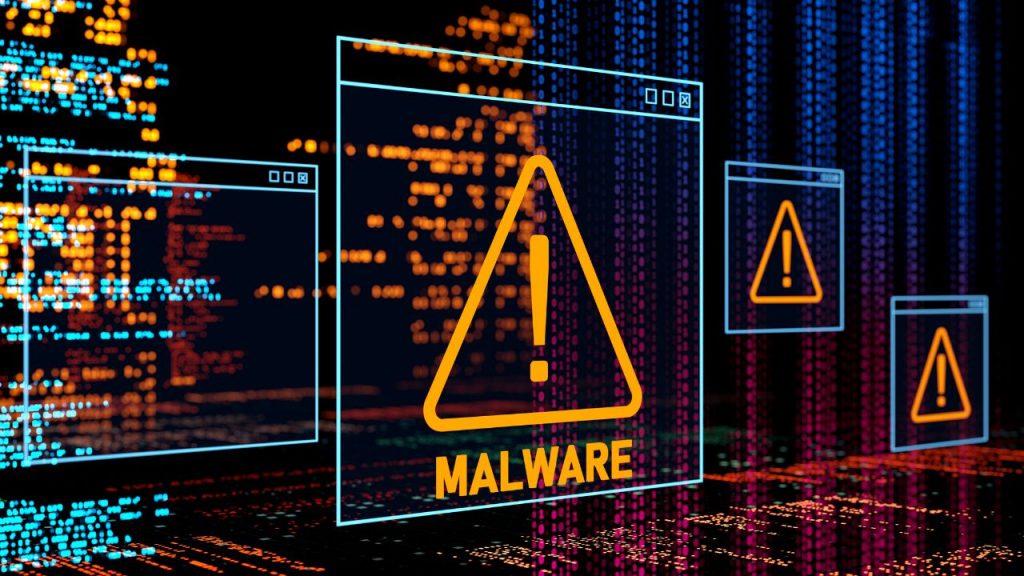Thursday, August 21st, 2025
The Evolving Challenge of Vulnerability Management


Vulnerability management has become one of the most complex and pressing challenges in cybersecurity. High-profile incidents like Log4j (CVE-2021-44228) exposed how unprepared many organisations were, with some still relying on Excel spreadsheets for asset inventories. When Log4j hit, security teams spent thousands of hours just identifying which assets were at risk. It was a wake-up call for the industry.
Why Vulnerability Management Is So Complex
Vulnerability management is far from straightforward. Organisations must deal with:

Shadow IT

Constantly growing volumes of vulnerabilities, with more than 25,000 new ones identified every year.

Lack of Asset Visibility

Organisations often struggle to track assets, a challenge amplified during mergers and acquisitions.

Risks from New Technologies

Adopting innovations without fully understanding their exposure introduces new security risks.
This complexity demands more than point-in-time scans. It requires continuous visibility and an approach that evolves alongside the threat landscape.
From Scanning to Continuous Management
The vulnerability management market has shifted dramatically over the past decade. Once dominated by simple scanning tools that generated static reports, the focus has now moved to ongoing management and trend analysis over time.
Repeated wake-up calls have driven this evolution. Each high-profile vulnerability shows the risk of not knowing whether critical systems are exposed. As a result, more organisations are investing in comprehensive tools that not only scan but also provide visibility across a diverse and expanding IT ecosystem.
Beyond IT: OT, ICS, and IoT Risks
While traditional IT infrastructure has received the bulk of attention, attackers are increasingly exploiting vulnerabilities in operational technology (OT), industrial control systems (ICS), and IoT environments.
Historically, organisations kept many of these networks air-gapped and considered them safe. As remote management became standard, teams brought these systems online, often without adequate security controls. Today, OT and ICS environments face internet exposure, and many organisations are only beginning to integrate them into vulnerability management programmes.
The Expanding Attack Surface
The attack surface is expanding rapidly as more devices, systems, and networks become interconnected. From internet-facing applications to HVAC systems and building automation, every connection is a potential risk.
To keep pace, organisations must broaden their view of vulnerability management. It is no longer just about patching servers and desktops. It’s about achieving continuous asset discovery, protecting OT and cloud environments, and addressing vulnerabilities across the full spectrum of modern infrastructure.
OT and ICS: Low-Hanging Fruit for Attackers
One of the most alarming realities in vulnerability management is just how easy it can be for attackers to target operational technology (OT) and industrial control systems (ICS). Unlike traditional IT assets, these systems are rarely updated and are often programmed without robust security considerations.
From an attacker’s perspective, this makes OT and ICS environments “low-hanging fruit.” Once an attacker gains a foothold in the internal network, pivoting into connected OT devices is relatively straightforward. The potential business impact is huge: halting an assembly line, disrupting a pipeline, or shutting down industrial operations can cause severe financial and reputational damage.
The Growing Scale of Vulnerabilities
The challenge doesn’t stop there. According to Gartner, between 50 and 80 new Common Vulnerabilities and Exposures (CVEs) are published every single day, totalling around 25,000 to 30,000 new vulnerabilities per year.
This flood of vulnerabilities is made worse by IT sprawl. Years ago, a company’s IT environment might have been confined to a data centre containing endpoints, servers, and networking equipment. Today, IT is everywhere: cloud platforms, mobile devices, IoT, OT, and an ever-expanding range of endpoints.
This growth has dramatically increased the attack surface, providing adversaries with countless new avenues of entry. In fact, many organisations still lack even a clear inventory of their assets. Some don’t realise how systems are interconnected until a vulnerability scan inadvertently identifies hidden subnets or thousands of unmanaged devices like IP phones.
Why Spreadsheets No Longer Cut It
Relying on Excel spreadsheets to track assets and vulnerabilities has become completely unmanageable. With thousands of new vulnerabilities surfacing every year, spreadsheets cannot keep up with the complexity of modern IT and OT environments.
Organisations need a robust software suite that automatically discovers assets, assesses vulnerabilities, and prioritises remediation. Without it, they’re left guessing which vulnerabilities exist, where they reside, and how much risk they pose to business continuity.
The Rise of Attack Surface Management
To address this complexity, Gartner has defined the concept of Attack Surface Management (ASM). ASM represents the processes, technologies, and managed services required to identify, assess, and manage vulnerabilities across an organisation’s entire digital footprint.

Discovering Assets Continuously

Continuous discovery uncovers every system, from new servers to overlooked cloud instances. Without this visibility, organisations are blind to potential entry points attackers may already be probing.

Prioritising Remediation

Modern vulnerability management blends severity ratings with business context, data sensitivity, system role, and exploitability. This ensures remediation focuses on weaknesses most likely to cause serious disruption to critical operations and business revenue.

Ensuring Business Continuity

The aim isn’t patching everything instantly but reducing risk systematically within resources. By automating workflows, assigning accountability through ticketing, and prioritising high-impact vulnerabilities, organisations can maintain secure operations and avoid burnout.
This holistic, layered approach is essential today because risks extend beyond the data centre into the cloud, OT, IoT, and every system in between.
The Challenge of Asset Discovery in Complex Organisations
For large, distributed organisations, simply knowing what assets exist across the network is daunting. Imagine a company with 5,000 employees, 50 sites, and an expanding portfolio of technologies, applications, and OT devices. Assets change daily, making it nearly impossible to maintain a reliable inventory with manual methods.
While scanning tools can provide visibility, the real challenge lies in people and process. Collecting information is only the first step. Someone must take ownership of interpreting it, prioritising remediation, and driving meaningful reduction of the attack surface. Without dedicated personnel and a clear workflow, asset discovery data becomes another unmanageable spreadsheet rather than a path to stronger security.
Why Not All Assets Are Equal
Once a reliable database of assets exists, the next question is: which ones matter most? Not all assets carry the same level of risk. Some hold sensitive data, others enable critical business processes, and some act as gateways to wider parts of the network.
Teams can’t prioritise vulnerabilities blindly. Modern approaches use machine learning to analyse factors like network traffic, installed applications, and system roles to assign criticality ratings. This allows organisations to focus limited resources on protecting the assets that, if compromised, would have the greatest business impact.
Small Vulnerabilities, Big Consequences
One of the most important lessons from real-world attacks is that even seemingly minor vulnerabilities can have serious consequences. An organisation might not prioritise a compromised printer, but attackers can reuse its stored credentials to move laterally through the network and cause catastrophic damage.
This underlines the need to view vulnerabilities not just in terms of their technical severity but also their business impact. Security teams must sit down with business leaders to explain how different vulnerabilities translate into operational risk, then prioritise remediation accordingly.
The Reality of Patching at Scale
The sheer scale of vulnerabilities makes patching every issue unrealistic. With 50–80 new vulnerabilities published every day, plus the flood of updates on every Patch Tuesday, most organisations face a permanent backlog.
Best practice is not to patch everything at once but to prioritise based on exploitability and business impact. Attackers don’t necessarily focus on the “scariest” CVEs in a vacuum. Instead, they focus on what works. This is where vulnerability priority ratings (VPR) or similar approaches add value.
Process, People, and Technology Together
Ultimately, effective vulnerability management is not just a technology problem. It requires a continuous cycle of scanning, assessment, prioritisation, remediation, and reassessment. It requires people dedicated to managing not only the tools but also the follow-up actions.
Read More from Our Latest News:
- The UK’s cyber problem just got a price tag
 New UK research reveals the real cost of cyber attacks, from £195k per incident to £14.7bn annually. With four nationally significant attacks a week, the UK’s cyber threat is now a business and national resilience issue.
New UK research reveals the real cost of cyber attacks, from £195k per incident to £14.7bn annually. With four nationally significant attacks a week, the UK’s cyber threat is now a business and national resilience issue. - Smarttech247 Recognised for 2nd Year in Gartner’s Market Guide
 Smarttech247 (AIM: S247) recognised for the second year in Gartner’s Market Guide for Managed Detection and Response, reinforcing its AI-driven MDR expertise.
Smarttech247 (AIM: S247) recognised for the second year in Gartner’s Market Guide for Managed Detection and Response, reinforcing its AI-driven MDR expertise. - Smarttech247 Launches Fifth Edition of Women in Cybersecurity Academy
 Women in Cybersecurity Academy is a free six-week global learning initiative designed to empower women with the skills to pursue a career in cybersecurity.
Women in Cybersecurity Academy is a free six-week global learning initiative designed to empower women with the skills to pursue a career in cybersecurity.
Contact Us
The data you supply here will not be added to any mailing list or given to any third party providers without further consent. View our Privacy Policy for more information.